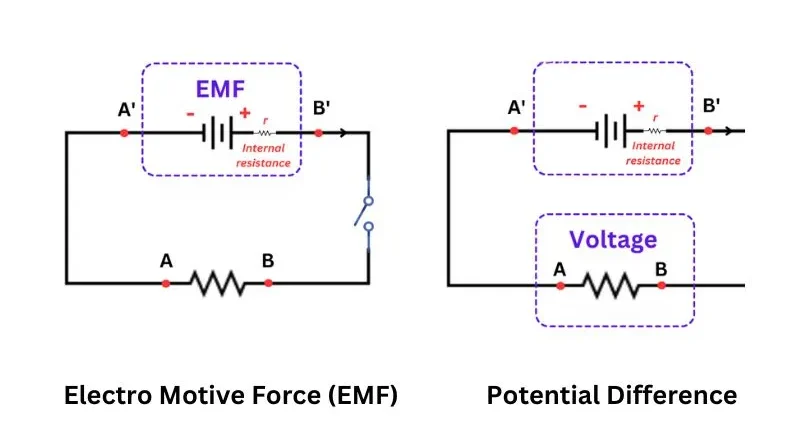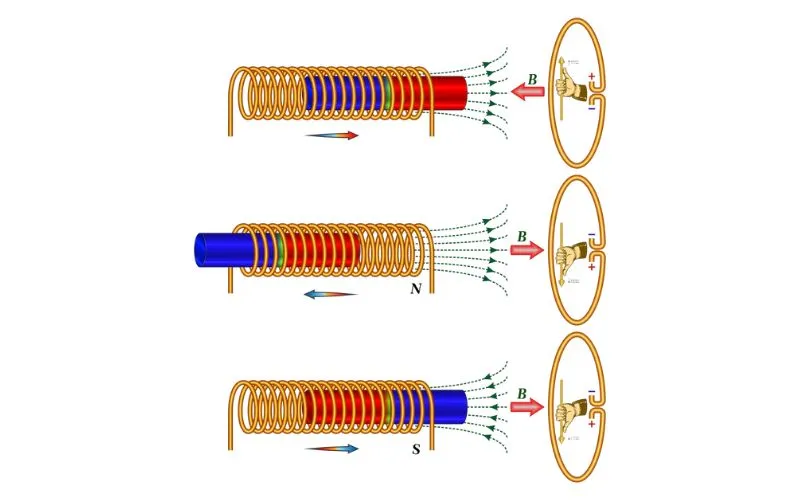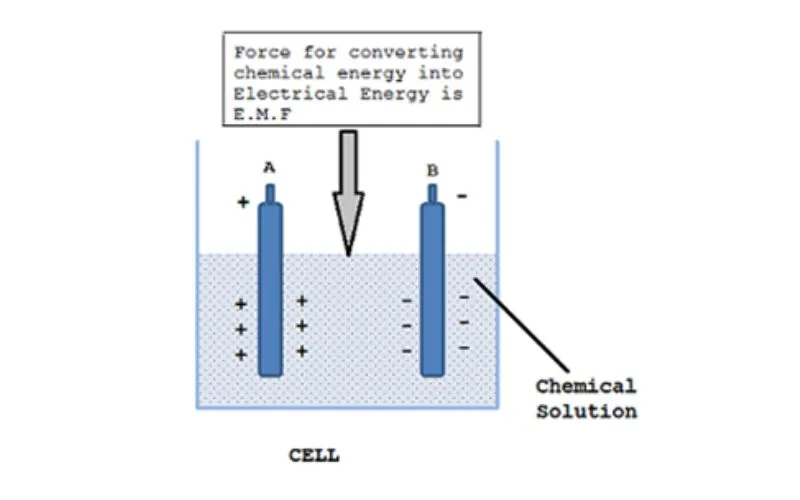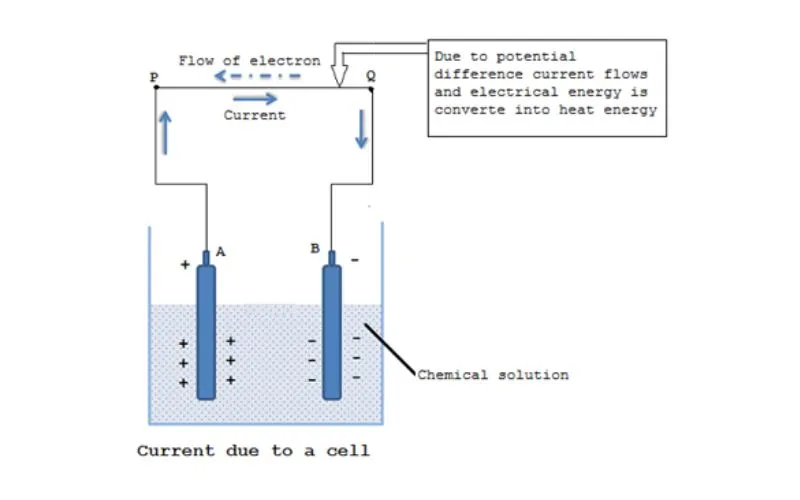
What is electromotive force (EMF)?

Electromotive force, often called EMF, is a fundamental concept in electricity and electronics. It represents the difference in electrical potential between two points in a circuit when there is no current flowing. EMF is responsible for the force that pushes electrons through a conductor, creating an electrical current.
The SI unit of EMF
The SI unit of electromotive force is the volt, represented by the symbol “V”. It is named after Alessandro Volta, an Italian physicist who made a significant contribution to the understanding of electricity. A volt is the electromotive force that produces a current of one ampere when applied to a resistance of one ohm.
EMF in batteries and generators
EMF is commonly observed in batteries and generators. In a battery, chemical reactions produce EMFs, causing electrons to flow through an external circuit and power various devices. Generators, on the other hand, use mechanical energy to induce EMF and convert it into electrical energy.
Understanding EMFs and their role in the current flow
The electromotive force is the force that creates the flow of current in a given circuit and allows us to perceive it, which means a lot of clarity.
Through a simple cell shown in Fig. Due to the chemical reaction in the solution, terminal “A” acquired a positive charge while terminal “B” acquired a negative charge.

Now, a piece of conductor is connected between terminals A and B, and then migration of electrons through it begins. This could be nothing other than the movement of current through the conductor. This can also be shown in the figure. Electrons can travel from terminal B to terminal A. Therefore, the current path goes from A to B, that is, from positive to negative.
It can be assumed that the flow of electrons may stop after the positive charge at terminal A is neutralized by the electrons. Each of the terminals may become neutral after some time. However, this will not happen often. This may be caused by a chemical change in the solution that keeps terminal A charged and terminal B negatively charged. This keeps the electricity flowing; The chemical change converts chemical energy into electrical energy, which sustains the flow of electrons.
Consider two points P and Q as shown in Fig. Then current flows from point P to point Q. This indicates that there is a potential difference between P and Q. This potential difference is called voltage, labeled as V and measured in volts.

Understanding Potential Difference (PD).
Potential difference, also called PD or voltage, is the difference in electrical potential energy per unit charge between two points in a circuit. The driving force moves electrons through a conductor and creates an electric current.
SI unit of PD
The SI unit of potential difference is also volt (V), as is EMF. This common entity highlights the close relationship between EMF and PD in electrical circuits.
PD in circuits
In electrical circuits, a potential difference exists between different points, typically between the positive and negative terminals of a power source, such as a power supply. B. a battery. This voltage difference drives the flow of electrons from the high potential (positive terminal) to the low potential (negative terminal) through the circuit.

Differences between EMF and PD
Here is a table that summarizes the differences between electromotive force (EMF) and potential difference (PD):
| comparison aspect | Electromotive force (EMF) | Potential difference (PD) |
|---|---|---|
| Nature of concepts | Represents the total potential energy in a source when no current is flowing. | The difference in potential energy between two points in a circuit when a current flows. |
| Direction of force | It always pushes electrons from the negative terminal to the positive terminal of a source. | The direction may vary depending on the specific connections within a circuit. |
| Application in circuits | In conjunction with the electrical energy source, it begins the flow of electrons. | Observed within the circuit, it maintains and regulates the flow of electrons. |
This table briefly compares the main differences between EMF and PD so that their different functions in electrical circuits are easier to understand.
Conclusion
Electromotive force (EMF) and potential difference (PD) are fundamental concepts in electricity and electronics. EMF initiates the flow of electrons, while PD ensures their continuous movement through electrical circuits. Understanding these concepts is critical to the design, operation and maintenance of safe and efficient electrical systems in our modern world. Whether it's the batteries in our devices, the generators in power plants or the circuits in our homes, EMFs and PD are at the heart of everything and are therefore essential concepts for anyone who works with electricity.
Common questions
What is the relationship between electromotive force and voltage?
EMF and voltage are often used interchangeably in everyday life, but they have different meanings in physics. EMF represents the total potential difference supplied by a source, while voltage (or PD) refers to the potential difference between two points in a circuit. In short, voltage is a type of potential difference and EMF is a special form.
Can PDs exist in a circuit without EMF?
No, PD cannot exist in a circuit without EMF. EMF is needed to establish the initial potential difference between two points in the circuit. PD is the result of this EMF that drives the flow of electrons through the circuit.
What influence do EMF and PD have on electrical safety?
EMF and PD are important aspects of electrical safety. They determine the intensity of the electrical force in a circuit. If not handled correctly, it may result in electric shock, fire or damage to electrical equipment. To ensure safety, it is important to ensure that circuits are designed and operated with the correct EMF and PD levels.
Can EMF or PD be negative?
Yes, both EMF and PD can be negative. A negative EMF or PD indicates that the potential at one point in a circuit is lower than at another point. This can occur when a circuit is wired so that the flow of electrons is in the opposite direction or when certain components cause a voltage drop. Negative values are important to accurately represent circuit behavior in different scenarios.

